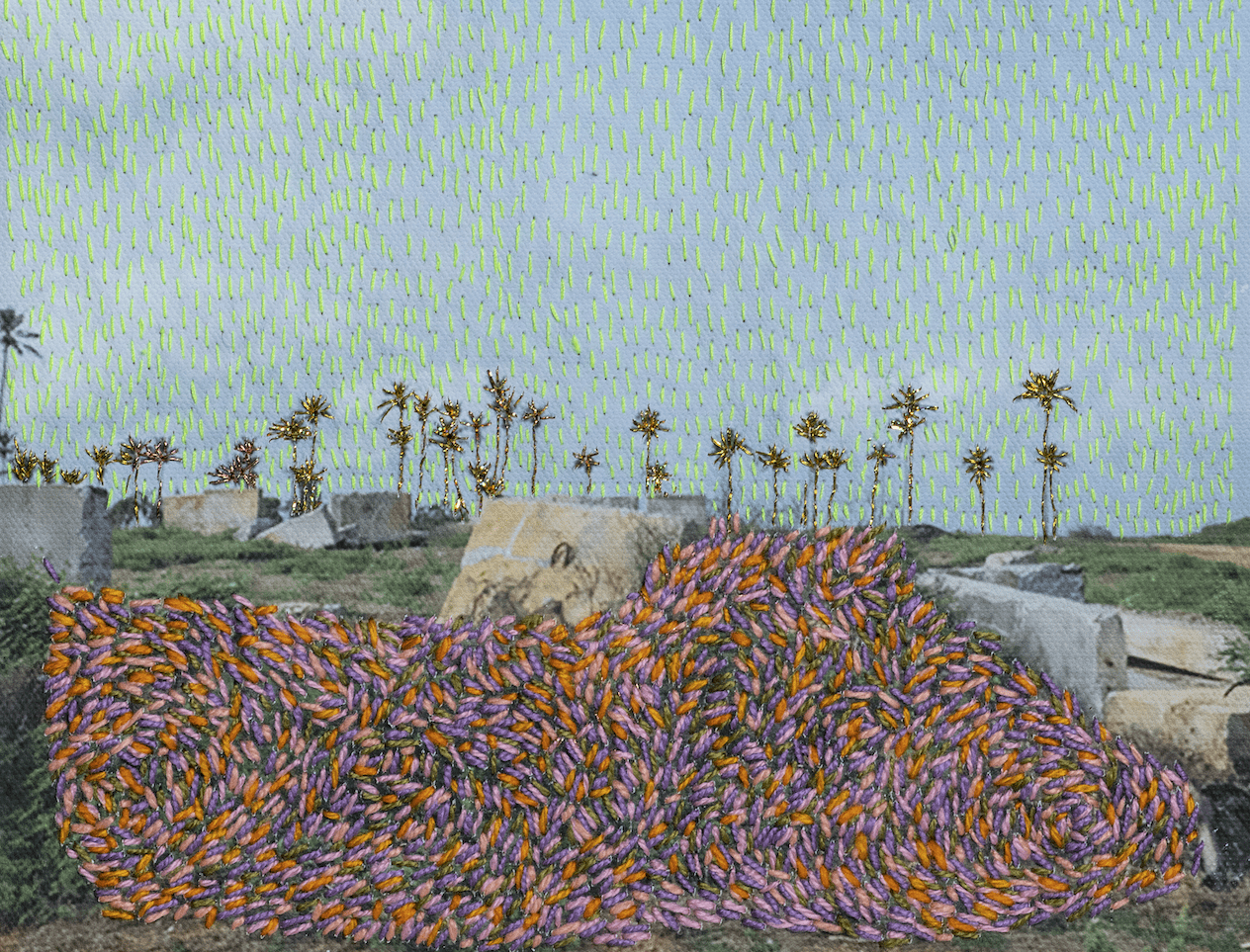Changing Perspectives on Waste
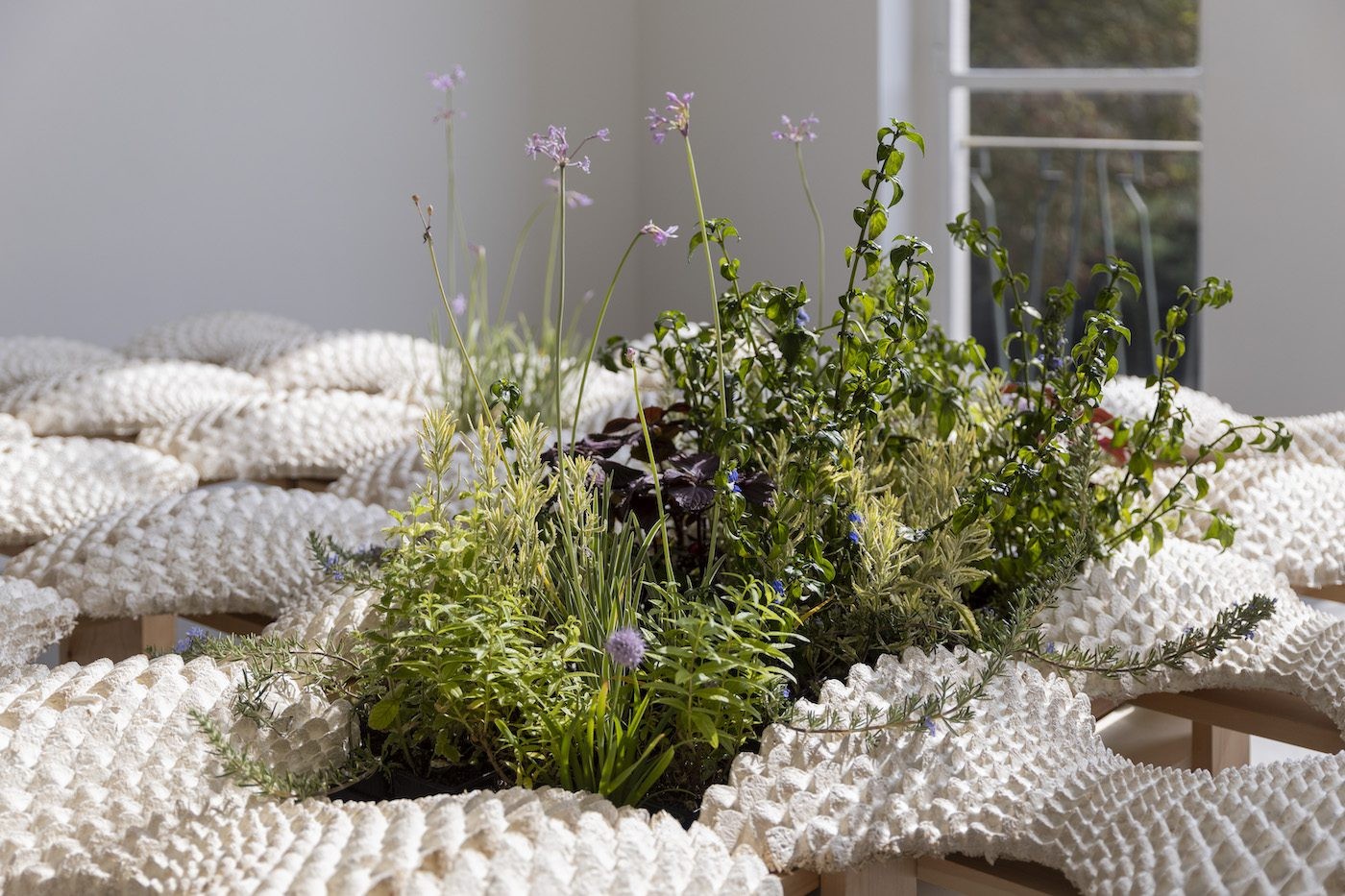
26 May 2023
Magazine C& Magazine
Words Edna Bonhomme
7 min read
Our writer Edna Bonhomme speaks to Mae-ling Lokko about agrowaste, fungi, and her evolution as an artist.
Mae-ling Lokko is an architectural scientist, designer, and educator. She creates new worlds with organisms we often forget. “My reverence for natural materials can be traced back to this one moment in Maao, observing the invisible choreography of the nipa,” she wrote in a 2018 edition of Frieze magazine. It was a reflection on her architectural inspirations and how the Filipino nipa, the type of home her mother grew up in, had shaped her practice. For Lokko, the hut is more than a vernacular structure providing refuge in Filipino society. It is an acutely designed building which models nature into a stable form. Its bamboo and natural fibers symbolized “a bottomless feeling of softness” for Lokko, a feeling that she pursued while conducting research in regions of Southeast Asia and West Africa that relate to her cultural identities. In this interview Lokko speaks about agrowaste, fungi, and her evolution as an artist.
Edna Bonhomme: Your work is deeply embedded in the world of architectural technology. You occupy many spaces, the arts as well as academia. How does academic training inform your art practice, and how does your art practice inform your academic work?
Mae-ling Lokko: I think my process of research on the historical, technological, or cultural fronts is often one and the same whether I am working towards an academic publication or an art piece. But I tend to use academic methodologies – iterative research, development, and testing – to inform my material practice. Because iteration is important for improving material prototypes for architectural applications. I also tend to use architectural-scale elements in my art – be it modules, walls, or ceiling surfaces.
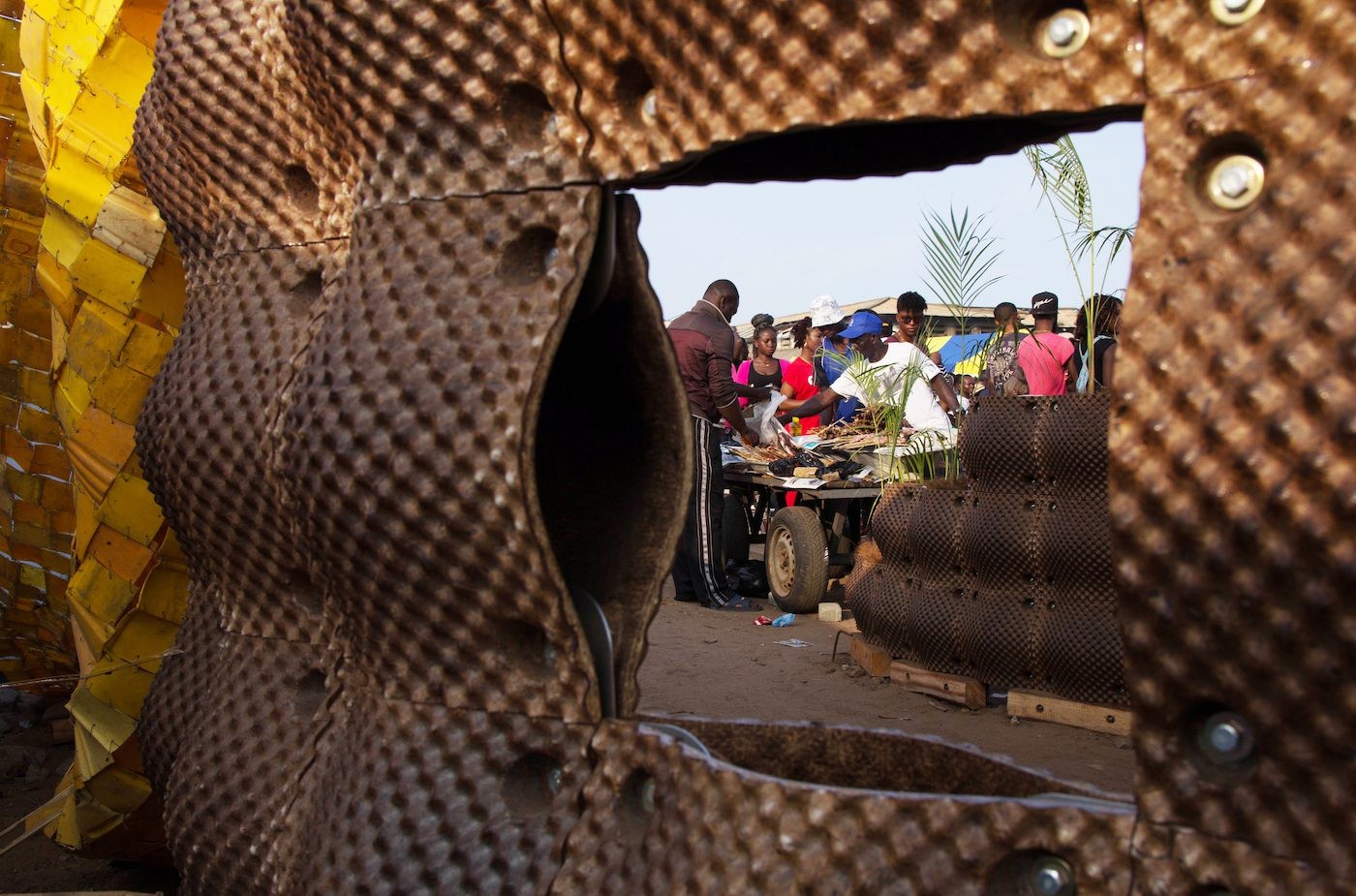
Mae-ling Lokko, CASE Upcycling Pavillion, Ghana Studio, 2016, Photo: Sarah Reynolds. Courtesy of the artist.
EB: In recent years you have worked with agrowaste and biobased materials in your design practice to build a new material vocabulary and expand the possibilities of architecture. In your work Agrocologies (2019) you explored upcycling by showing how agrowaste processing might be integrated in the domestic sphere. Why did you focus on agrowaste?
M-lL: Agrowaste is a material group powerfully linked to the history of plant extraction from the tropics to other parts of the world: often the “fruit,” the most valued part of the plant, makes its way to global markets, and the “agrowaste” is what is left behind. The question of accessibility, of where one can get it and from whom, is very important to me. If agrowaste is already in the hands of those who are the most economically vulnerable within a global material system, how can one expand and transform its role? Secondly, the diversity and range of agrowaste offers incredibly sophisticated material potentials for applications in buildings and the broader ecology. And lastly, because of how their volume and production are closely tied to human population growth, agrowaste represents a renewable, locally specific resource
EB: In your installation Hack the Root (2018 you worked with fungi’s vegetative state and addressed under- ground fungal networks as nature’s glue that binds everything. Can you explain how their biological shapes have an aesthetic quality and to what extent fungi lifecycles can be seen as an organic artistic contribution to nature?
M-lL: Maybe a more useful way to see it is that, like us, fungi have various capacities to digest specific types of food. Some prefer lignocellulosic materials, which a large percentage of our plant kingdom is made of, and some like plastic or heavy metals.
So there are infinite possibilities in terms of aesthetics and material properties (color, smell, texture), depending on the mycelium strain and substrate. However, I think that when speaking about an “artistic contribution” it is more a collaboration between artist and fungi. I’m interested in how we understand and design the environment within which fungi can grow – in which they are capable of growing to micro-scale patterns, capable of growing from coarse to velvety textures, or generating specific smells.
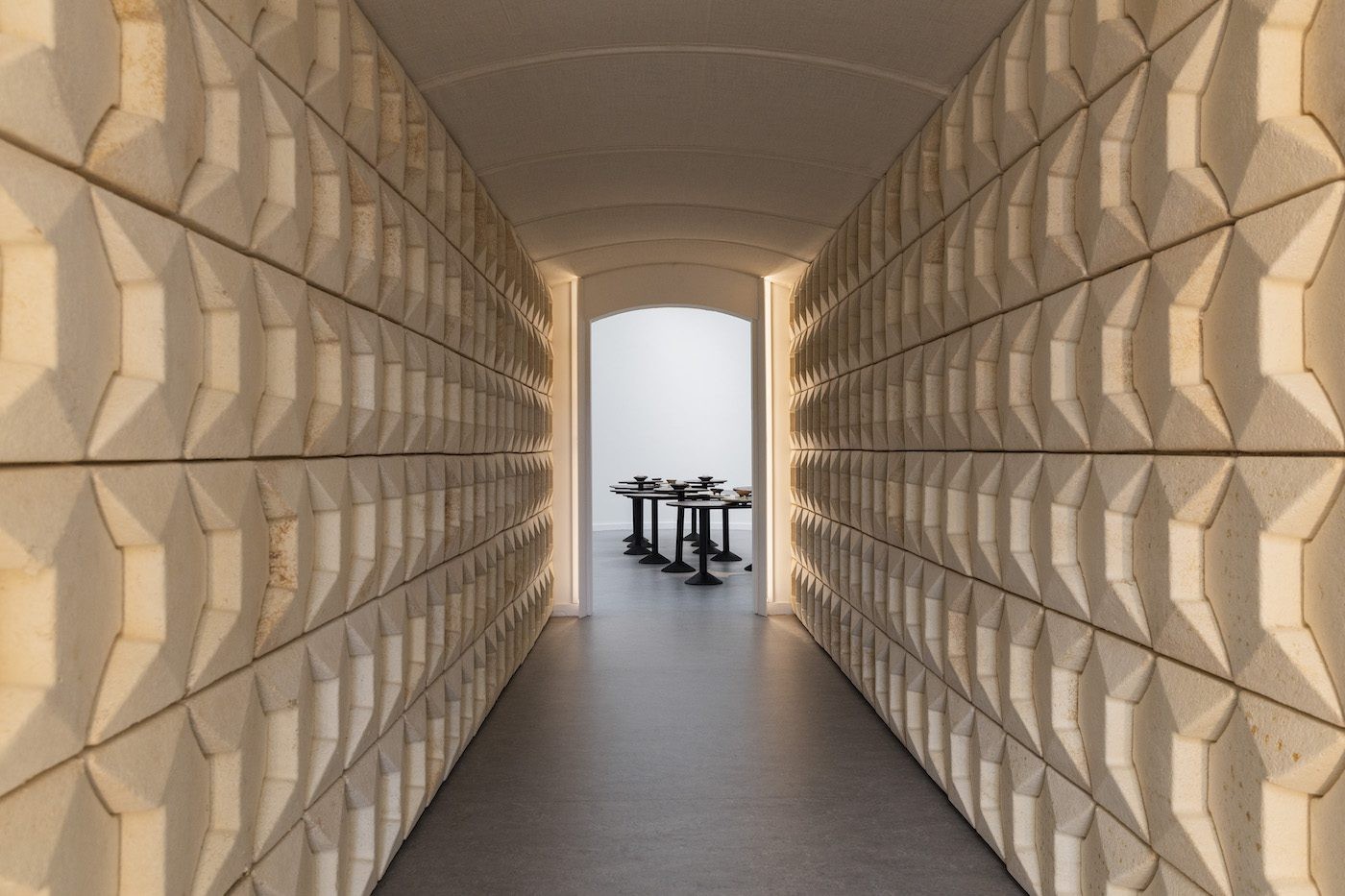
Mae-ling Lokko, MycoTunnel for Z33. Courtesy of the artist.
EB: Your work Myco Tunnel (2021) was a bio- architectural pathway. The wall was neutral in color, interspersed with serial textured ridges. What was the logic behind these choices?
M-lL: The color is merely a result of the mycelium strain that was used. It is great at digesting components in our substrates and yields a whitish-brown color. I personally don’t like “make-up” on building materials – I am very cautious about coating myco- based materials for the purposes of giving it color, as this stops its ability to breathe. When we do this to natural materials, we interfere with their ability to dry and expand, which leads to other types of material failures. The form of the panel itself was very elemental. It was about giving direction to circulation within a tunnel space in terms of light, about how touch could be encouraged along the surface of the panel.
EB: You move through various social contexts – integrating African and Southeast Asian cultures – which relate to your personal identity and to your work as an architect. You also look at how food production and labor can be parsed out and valued.
M-lL: In the case of agro-based materials particularly, I think that we can’t activate, normalize, or afford new material practices unless we are able to shift our cultures around food production and distribution. It’s too expensive to produce and scale biogenic building materials using the inherited systems of food production and material manufacturing we have today. From current perspectives variable agrowaste feedstocks are seen as a problem, while consumers are regarded as passive, receiving subjects rather than participating actors in a second cycle of production. So for me producing art that focuses on new roles, engagement with new material systems, or new rituals of material production is part of the larger project.
EB: So much of your work involves redesigning nature to prioritize non-sentient organisms. At the same time, generating a sustainable future seems essential – in your production and in your attempt to honor the Earth we have inherited. Given the climate crisis, what is your vision of a viable human and non-human aesthetic relationship for future artists?
M-lL: My approach is to “personify” plant or fungi life kingdoms. I apply it to air, land, and water. The act of personifying air or plants allows me to understand and learn about them like I would get to know a person. Where is it from, what does it like to eat, what does it need in order to grow, what things contribute to shaping its quality of life? This leads me towards thoughts beyond “waste” – because once you know something or someone better it is impossible to think of anything that occupies our planet as “waste.” A more productive way of framing these connections is through empathy, which allows us to see the world through another’s eyes. If I put myself in the place of an air parcel or a fungal mycelium organism, I suddenly see a wealth of organizational and systemic possibilities that benefit and celebrate the material throughout its life and death. For an artist or designer, this opens up a new realm of creative possibility and ultimately generates propositions about the role of the human within a broader material ecology.
Mae-ling Lokko is an Assistant Professor at Yale University’s School of Architecture (YSoA). She is an architectural scientist, designer and educator from Ghana and the Philippines who works with agrowaste and renewable biobased materials. Through her work, Lokko explores themes of “generative justice” through the development of new models of distributed production and collaboration. In her artistic and design practice, her work deconstructs historical narratives and practices of extraction through the design of new material vocabularies and the prototpying of participatory models of production.
Edna Bonhomme is a historian of science and writer based in Berlin, Germany. Edna’s essays critically engage with how people navigate the unsavory and unwieldy states of illness and health – especially how people contend with contagious outbreaks, medical experiments, reproductive assistance, and illness narratives. Her work has appeared in Al Jazeera, the Atlantic, the Guardian, the London Review of Books, and elsewhere.
This article is from the latest C& and C&AL Print Issue “Ecologies”. Read the full magazinehere.
Read more from
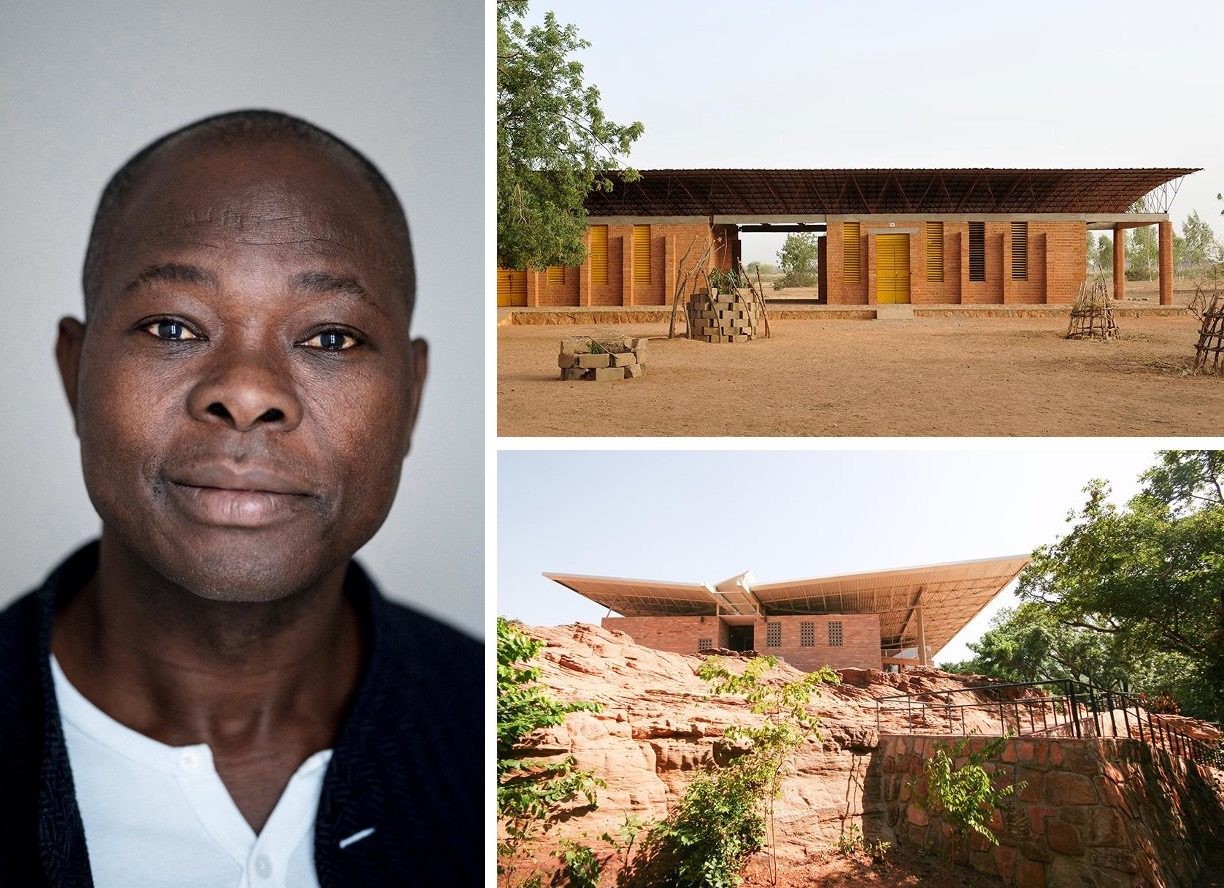
Diébédo Francis Kéré Receives the 2022 Pritzker Architecture Prize
